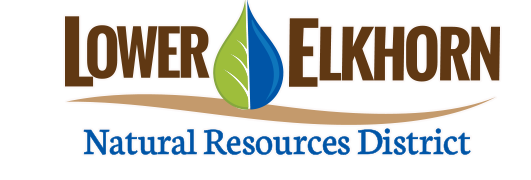At their October meeting, the Lower Elkhorn Natural Resources District (LENRD) Board of Directors approved a motion to direct staff to begin the formal process for consideration of a Phase 2 Groundwater Management Area in portions of Cuming, Colfax, and Dodge counties for groundwater quality purposes.
In 1997, a Groundwater Management Area was established to improve and protect groundwater quantity and quality. The management area covers the entire LENRD or all or parts of 15-counties in northeast Nebraska. This designation put the entire district into Phase 1 of groundwater management controls. Since that time, portions of Pierce and Madison Counties have moved into Phase 2 & 3 management sub-areas due to the increasing trend of nitrate concentration in the groundwater.
As part of the LENRD’s Groundwater Quality Sampling program, water samples are collected annually across the district to help document any changes or trends in groundwater quality, testing for general water quality parameters. This data is carefully scrutinized and can be used to delineate areas that have similar groundwater quality characteristics, such as areas that have high or low nitrate-nitrogen levels. LENRD Assistant Manager, Brian Bruckner, said, “In the past few years, the district has seen an increase in nitrates in the groundwater in portions of these three counties.”
Organic and Inorganic fertilizers and livestock manure contain nitrogen that is either in the nitrate form or is easily converted to nitrate. Nitrate dissolves readily in water, and when this nitrate-containing water moves through the soil and below plant roots, it can very easily reach and contaminate groundwater.
Bruckner added, “We can work together to minimize the impact of agricultural contaminants on groundwater by encouraging, and in some cases, requiring the use of wise management practices. Designating a boundary is one of the first steps in establishing a management area.”
Bruckner continued, “As we begin the process of delineating a Phase 2 Groundwater Management Area, the district will be hosting educational workshops to inform stakeholders on the issues, answer questions on the implications of a Phase 2 Area, and come up with solutions to address this potential health risk. We will also be organizing a series of public meetings in this tri-county area in December to begin to inform and educate the public on the critical need to keep our water supply safe.”
Nitrate-nitrogen can be a threat to good health, and the U.S. Environmental Protection Agency and the Nebraska Department of Health have established an upper limit of 10 milligrams per liter (or parts per million or ppm) of nitrate-nitrogen for drinking water. The district encourages anyone using a private well as a drinking water source to test their water annually for nitrate-nitrogen and consult a physician if the nitrate-nitrogen levels are close to or above 10 milligrams per liter.
State statute requires that the LENRD provide stakeholders the opportunity to provide feedback and input on any proposed change to its Rules and Regulations or Management Area boundary via a public hearing. The district will be hosting several public information meetings in December in Colfax and Dodge Counties to inform stakeholders and will also host an Open House Public Hearing in late January in West Point.
In other business, the board authorized staff to sign the professional service agreement with FYRA Engineering, not to exceed $80,346 to complete the necessary repairs to the Elkhorn River Streambank Stabilization Project near Scribner, pending approval from both the City of Scribner and Dodge County.
The board also approved an agreement with the University of Nebraska for $34,291 to investigate the deep vadose (unsaturated) zone of locations in Pierce County where increasing nitrate levels are occurring. This project will provide data to help estimate the loading rate of nitrates into the groundwater.
After officially declaring a drought in September, the board continues to monitor any new developments. With the health and welfare of the public in mind, the board voted to establish a 12 acre-inch annual allocation for any well located in a designated Wellhead Protection Area (WHPA) within a D3 or greater drought area within the LENRD on November 1, 2020, and that the annual allocation be lifted if the area is removed from the D3 or greater designation. The board also approved a motion that would postpone construction of any new well that is part of an approved Variance for any location within the district that intersects with a D3 or greater drought designation on November 1, 2020.
The LENRD board & staff meet each month to develop and implement management plans to protect our natural resources for the future. The next LENRD board meeting will be Tuesday, November 24th at 7:30 p.m. Watch for further updates and stay connected with the LENRD by subscribing to their monthly emails.












